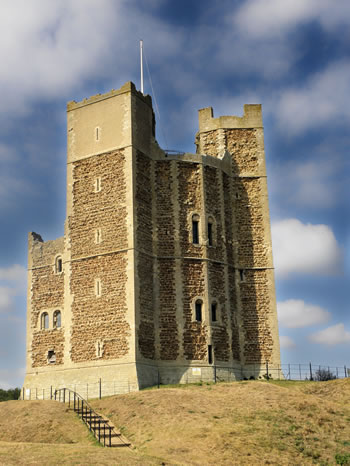 The Synod of Whitby in 664 was a Northumbrian synod where King Oswiu of Northumbria ruled that his kingdom would calculate Easter and observe the monastic tonsure according to the customs of Rome, rather than the customs practised by Irish monks at Iona and its satellite institutions. The synod was summoned at Hilda's double monastery of Streonshalh (Streanshalch), later called Whitby Abbey.
The Synod of Whitby in 664 was a Northumbrian synod where King Oswiu of Northumbria ruled that his kingdom would calculate Easter and observe the monastic tonsure according to the customs of Rome, rather than the customs practised by Irish monks at Iona and its satellite institutions. The synod was summoned at Hilda's double monastery of Streonshalh (Streanshalch), later called Whitby Abbey.
In placing the synod in its proper historical context, Anglo-Saxon historians have also noted the position of the synod in the context of contemporary political tensions. Henry Mayr-Harting considered Alchfrith's interest in the convocation of the synod to be derived from his desire to see his father's position in Bernicia challenged and to see the replacement of Colmn with another bishop who would be more aligned with himself.
 Orford Castle is a castle in the village of Orford, Suffolk, England, located 12 miles (20 km) northeast of Ipswich, with views over the Orford Ness. It was built between 1165 and 1173 by Henry II of England to consolidate royal power in the region. The well-preserved keep, described by historian R. Allen Brown as 'one of the most remarkable keeps in England', is of a unique design and probably based on Byzantine architecture. The keep still stands among the earth-covered remains of the outer fortifications.
Orford Castle is a castle in the village of Orford, Suffolk, England, located 12 miles (20 km) northeast of Ipswich, with views over the Orford Ness. It was built between 1165 and 1173 by Henry II of England to consolidate royal power in the region. The well-preserved keep, described by historian R. Allen Brown as 'one of the most remarkable keeps in England', is of a unique design and probably based on Byzantine architecture. The keep still stands among the earth-covered remains of the outer fortifications.
The 90-foot-high (27-metre) central tower was circular in cross-section with three rectangular, clasping towers built out from the 49-foot-wide (15-metre) structure. The tower was based on a precise set of proportions, its various dimensions following the one-to-the-root-of-two ratio found in many English churches of the period. Much of the interior is built with high-quality ashlar stonework, with broad, 5-foot-6-inch-wide (1.7-metre) staircases. The best chambers were designed to catch the early morning sun, whilst the various parts of the keep were draught-proofed with doors and carefully designed windows. Originally the roof of the keep, above the upper hall, would have formed a domed effect, with a tall steeple above that.
The keep was surrounded by a curtain wall with probably four flanking towers and a fortified gatehouse protecting a relatively small bailey; these outer defences, rather than the keep, probably represented the main defences of the castle. The marshes nearby were drained, turning the village of Orford into a sheltered port. The castle, including the surrounding ditch, palisade and stone bridge, cost £1,413 to build, the work possibly being conducted by the master mason Alnoth. Some of the timbers were brought from as far away as Scarborough, and the detailed stonework being carved from limestone from Caen in Normandy, the remainder of the stone being variously local mudstone and coralline, as well as limestone from Northamptonshire.